We know of Van Gogh’s particularity, his struggles and his needs through the regular letters he sent to his sympathetic brother Theo. Without that written record from Vincent’s own hand, we might have guessed some by simply looking at his images. Like a blind man feeling the walls of a soul with fingers, we could have surmised from the artist’s visual leavings, but never would’ve been specifically sure of the man.
Vincent’s 2D exuberance is evident: his promiscuity with paint and brushwork, his exaggerated sometimes garish color, his bold and roiling sketches, his animated skies, his grasping cypress trees, his bandaged and somber self portrait all suggest much about this emotional man. He’s left an incredible legacy just from this record. But his letters tell more the whole of him, and our guessing gets grounded. I’ve read through the complete collection of his letters twice and referenced it often. My college copy is marked up with highlights, underlines, exclamation marks and turned down pages. I was stunned then and am still– getting close to his motivation through his own often tortured telling. His words anchor the story.
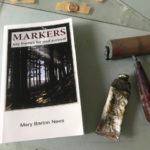
It’s the effort of articulation with words that anchors anyone’s ideas. This is where guessing has to give way. Poetry might give a fleeting suggestion. Painting or photography might allure with a silent witness. But prose leads with particularity. And it was for that reason that I thought it important to leave a record of words beyond the images I craft from my studio. My book Markers; Key Themes for Soul Survival has been out for two years now. The same motivation that moves me to paint is more specifically laid out with words. And like the paintings, my fingerprints are all over it– but it’s ultimately not about me, more about what it is that’s moving me.
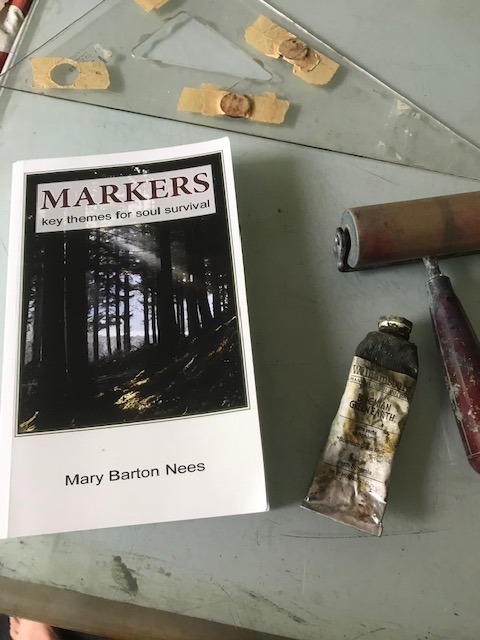


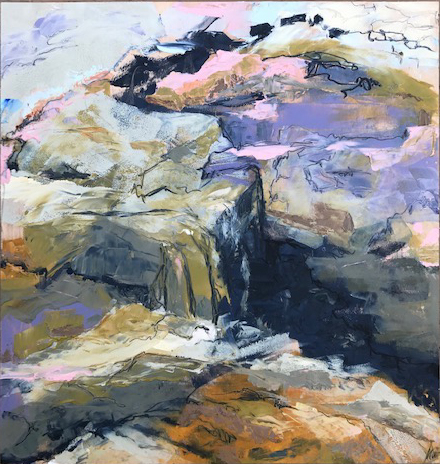
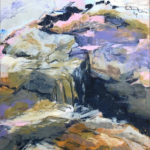
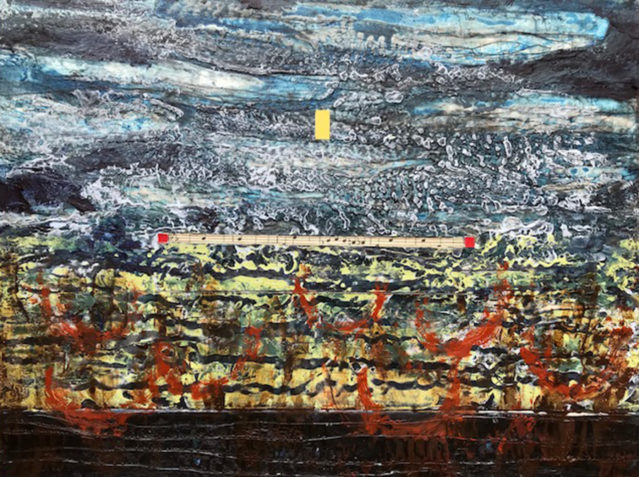

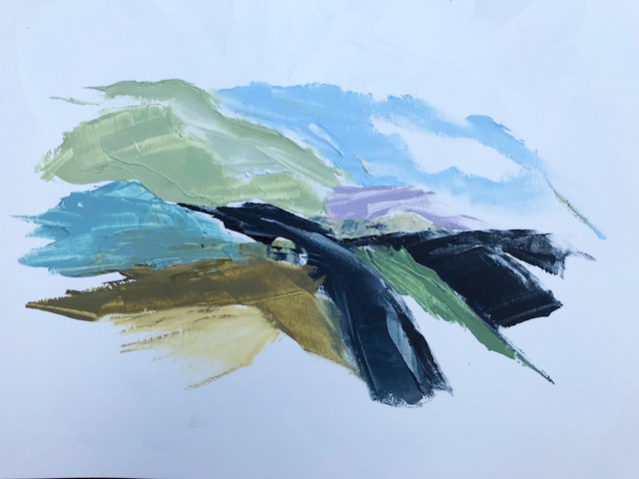
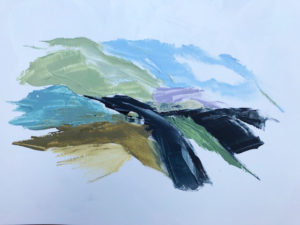 Lord, You have been our dwelling place in all generations.
Lord, You have been our dwelling place in all generations.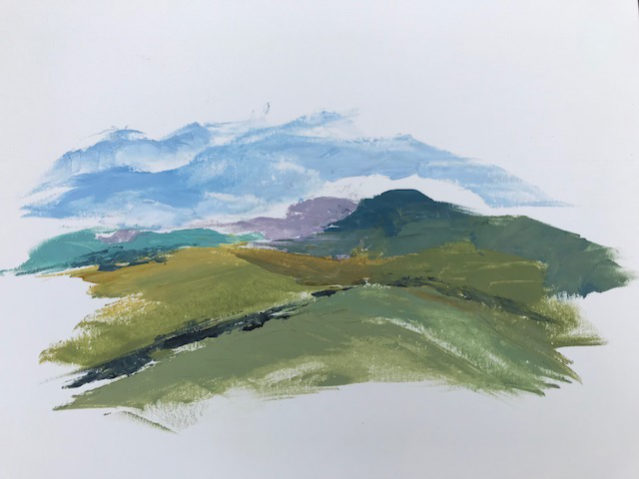
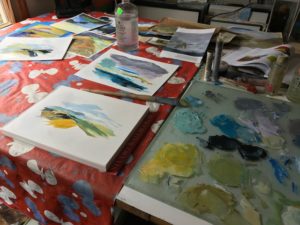 Yesterday in studio I worked up a palette of hues in oil, building from a photo I’d saved of an arctic scene in National Geo. You can see that here if you look closely at my messy table. I mixed up a set of replicated hues, pleasing together, and then added notes of my own with them, before I had any idea what I would do myself with this color grouping.
Yesterday in studio I worked up a palette of hues in oil, building from a photo I’d saved of an arctic scene in National Geo. You can see that here if you look closely at my messy table. I mixed up a set of replicated hues, pleasing together, and then added notes of my own with them, before I had any idea what I would do myself with this color grouping.
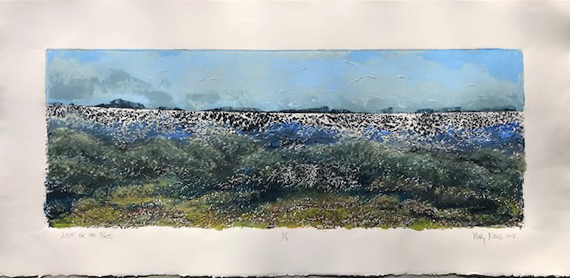
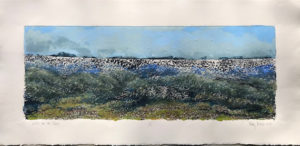 I am delighted to highlight a piece I made this winter which has been selected along with a small collection of other pieces by Dr. Noland, ETSU’s President, for brightening office spaces on campus.
I am delighted to highlight a piece I made this winter which has been selected along with a small collection of other pieces by Dr. Noland, ETSU’s President, for brightening office spaces on campus.

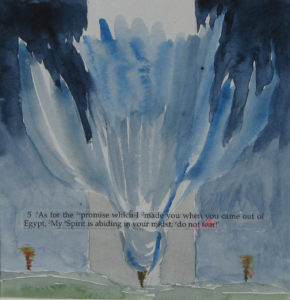
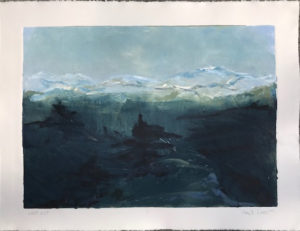 The fields are white, the horizon beckons and we’re keeping our trekking boots on. Some 48 years ago, I heard theologian Dr. Joseph Dillow explain the patterns in the ridges and the valleys of Isaiah’s prophetic masterpiece. It was like being in a biblical glider over peaks and valleys in the histories of nations. The prophet, viewing from hundreds of years before Jesus, saw with distinct clarity what was coming. To a young design student, this uber-view was mind-altering stuff. And we are standing in the midst of what Isaiah further predicted. To quote a secular seer “so let us not speak falsely now, the hour is getting late”*. We know the King is coming — we’ll not lag here in retreat.
The fields are white, the horizon beckons and we’re keeping our trekking boots on. Some 48 years ago, I heard theologian Dr. Joseph Dillow explain the patterns in the ridges and the valleys of Isaiah’s prophetic masterpiece. It was like being in a biblical glider over peaks and valleys in the histories of nations. The prophet, viewing from hundreds of years before Jesus, saw with distinct clarity what was coming. To a young design student, this uber-view was mind-altering stuff. And we are standing in the midst of what Isaiah further predicted. To quote a secular seer “so let us not speak falsely now, the hour is getting late”*. We know the King is coming — we’ll not lag here in retreat.
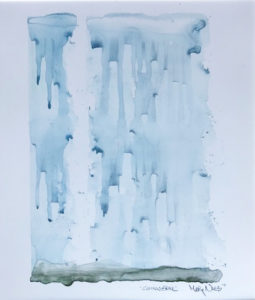 The advantage I have doing art is that I can “tell it slant” as Emily Dickinson used to say. There is no muzzle on when the work sings with beauty on its own. Makoto Fujimura explains it: “Art is an inherently hopeful act, an act that echoes the creativity of the Creator. Every time an architect imagines a new building, an artist envisions that first stroke of a brush on a white canvas, a poet seeks a resonant sound in words, or a choreographer weaves a pause in layers of movements, that act is done in hope; the creator reaches out in hope to call the world into that creation.” –Refractions (NavPress, 2009), 68.
The advantage I have doing art is that I can “tell it slant” as Emily Dickinson used to say. There is no muzzle on when the work sings with beauty on its own. Makoto Fujimura explains it: “Art is an inherently hopeful act, an act that echoes the creativity of the Creator. Every time an architect imagines a new building, an artist envisions that first stroke of a brush on a white canvas, a poet seeks a resonant sound in words, or a choreographer weaves a pause in layers of movements, that act is done in hope; the creator reaches out in hope to call the world into that creation.” –Refractions (NavPress, 2009), 68.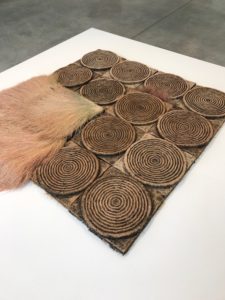 Yesterday an artist friend and I viewed an exhibit at
Yesterday an artist friend and I viewed an exhibit at